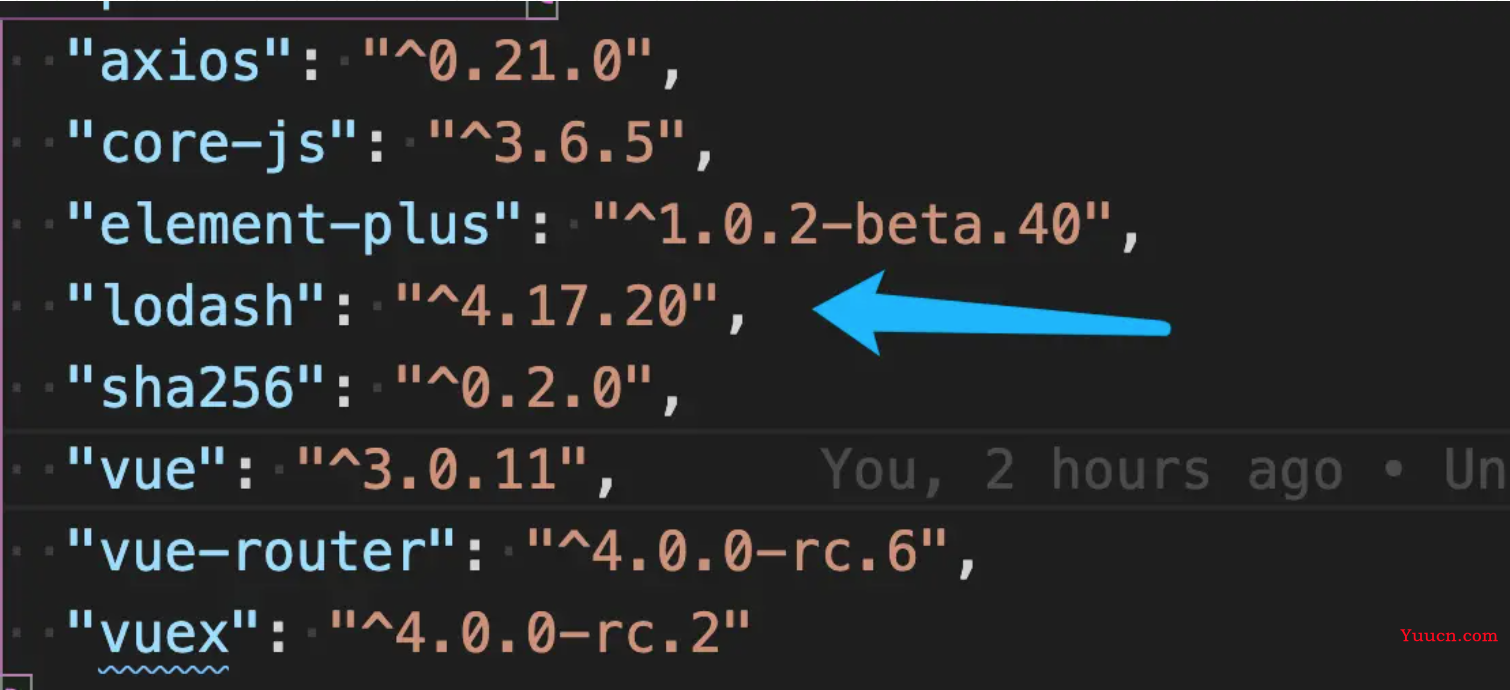简介
Lodash 是一个一致性、模块化、高性能的 JavaScript 实用工具库。它内部封装了诸多对字符串、数组、对象等常见数据类型的处理函数,Lodash 通过降低 array、number、objects、string 等等的使用难度从而让 JavaScript 变得更简单。
官网
Lodash 简介 | Lodash 中文文档 | Lodash 中文网
Array:适用于数组类型,比如填充数据、查找元素、数组分片等操作
Collection:适用于数组和对象类型,部分适用于字符串,比如分组、查找、过滤等操作
Function:适用于函数类型,比如节流、延迟、缓存、设置钩子等操作
Lang:普遍适用于各种类型,常用于执行类型判断和类型转换
Math:适用于数值类型,常用于执行数学运算
Number:适用于生成随机数,比较数值与数值区间的关系
Object:适用于对象类型,常用于对象的创建、扩展、类型转换、检索、集合等操作
Seq:常用于创建链式调用,提高执行性能(惰性计算)
String:适用于字符串类型
使用
1、首先通过npm全局安装ladash
npm i -save lodash \\全局安装

2、按需引入了如下方法:
方法一:
import _get from 'lodash/get'
import _map from 'lodash/map'
import _uniq from 'lodash/uniq'
import _pick from 'lodash/pick'
import _omit from 'lodash/omit'
import _isNaN from 'lodash/isNaN'
import _property from 'lodash/property'
import _findIndex from 'lodash/findIndex'
import _isUndefined from 'lodash/isUndefined'
import _isString from 'lodash/isString'
import _debounce from 'lodash/debounce'
方法二:
import {debounce, isString, isUndefined, isNaN, map} from 'lodash'
常见方法
-
_.chunk(array, [size=1])
含义:将数组(array)拆分成多个 size 长度的区块,并将这些区块组成一个新数组。
例子:
_.chunk(['a', 'b', 'c', 'd'], 2);
// => [['a', 'b'], ['c', 'd']]
_.chunk(['a', 'b', 'c', 'd'], 3);
// => [['a', 'b', 'c'], ['d']]- _getObjArray
@description 返回指定对象的 key 的值的数组,支持多层属性嵌套获取,如:obj.x.y.z,快速获取数组内需要的key值数组
@param {Array} [objects] 目标对象
var objects = [
{ 'a': { 'b': { 'c': 2 } } },
{ 'a': { 'b': { 'c': 1 } } }
]
utils._getObjArray(object, 'a.b.c') => [2, 1]
-
_.findIndex(array, [predicate=_.identity], [fromIndex=0])
该方法类似_.find,区别是该方法返回第一个通过 predicate 判断为真值的元素的索引值(index),而不是元素本身。
参数:
-
array(Array): 要搜索的数组。 -
[predicate=_.identity](Array|Function|Object|string): 这个函数会在每一次迭代调用。 -
[fromIndex=0](number): The index to search from.
返回值:
(number): 返回找到元素的 索引值(index),否则返回 -1。
例子:
var users = [
{ 'user': 'barney', 'active': false },
{ 'user': 'fred', 'active': false },
{ 'user': 'pebbles', 'active': true }
];
_.findIndex(users, function(o) { return o.user == 'barney'; });
// => 0
// The `_.matches` iteratee shorthand.
_.findIndex(users, { 'user': 'fred', 'active': false });
// => 1
// The `_.matchesProperty` iteratee shorthand.
_.findIndex(users, ['active', false]);
// => 0
// The `_.property` iteratee shorthand.
_.findIndex(users, 'active');
// => 2
-
_.uniq(array)
创建一个去重后的array数组副本。使用了SameValueZero 做等值比较。只有第一次出现的元素才会被保留
参数:
-
array(Array): 要检查的数组。
返回值:
(Array): 返回新的去重后的数组。
例子:
_.uniq([2, 1, 2]);
// => [2, 1]
- _isUndefined
@description 判断是否为undefined
@returns 返回布尔值
var a
utils._isUndefined(a) => true_.isNaN(value)
检查 value 是否是 NaN。
注意: 这个方法基于Number.isNaN,和全局的isNaN 不同之处在于,全局的isNaN对 于 undefined 和其他非数字的值返回 true。
参数:
-
value(*): 要检查的值。
返回值:
(boolean): 如果 value 是一个 NaN,那么返回 true,否则返回 false。
例子:
_.isNaN(NaN);
// => true
_.isNaN(new Number(NaN));
// => true
isNaN(undefined);
// => true
_.isNaN(undefined);
// => false
- _debounce
防抖函数真的太棒了,系统里那么多按钮都需要防抖处理。比如导出按钮,当然除了防抖函数我还另外上锁,避免由于网络原因造成的用户多次点击触发多次请求。
// 导出
export: utils._debounce(() => {
if (this.exportLock) return
this.exportLock = true
exportCommonData({
...this.formQuery,
...this.filter
}).then(res => {
delete this.exportLock
res.url && window.open(res.url)
})
}, 1000),
- _.isEmpty (value)
检查 value 是否为一个空对象,集合,映射或者set。 判断的依据是除非是有枚举属性的对象,length 大于 0 的 arguments object, array, string 或类jquery选择器。
对象如果被认为为空,那么他们没有自己的可枚举属性的对象。
类数组值,比如arguments对象,array,buffer,string或者类jQuery集合的length 为 0,被认为是空。类似的,map(映射)和set 的size 为 0,被认为是空。
参数:
value (*): 要检查的值。
返回值:
(boolean): 如果 value 为空,那么返回 true,否则返回 false。
例子:
_.isEmpty(null);
// => true
_.isEmpty(true);
// => true
_.isEmpty(1);
// => true
_.isEmpty([1, 2, 3]);
// => false
_.isEmpty({ 'a': 1 });
// => false